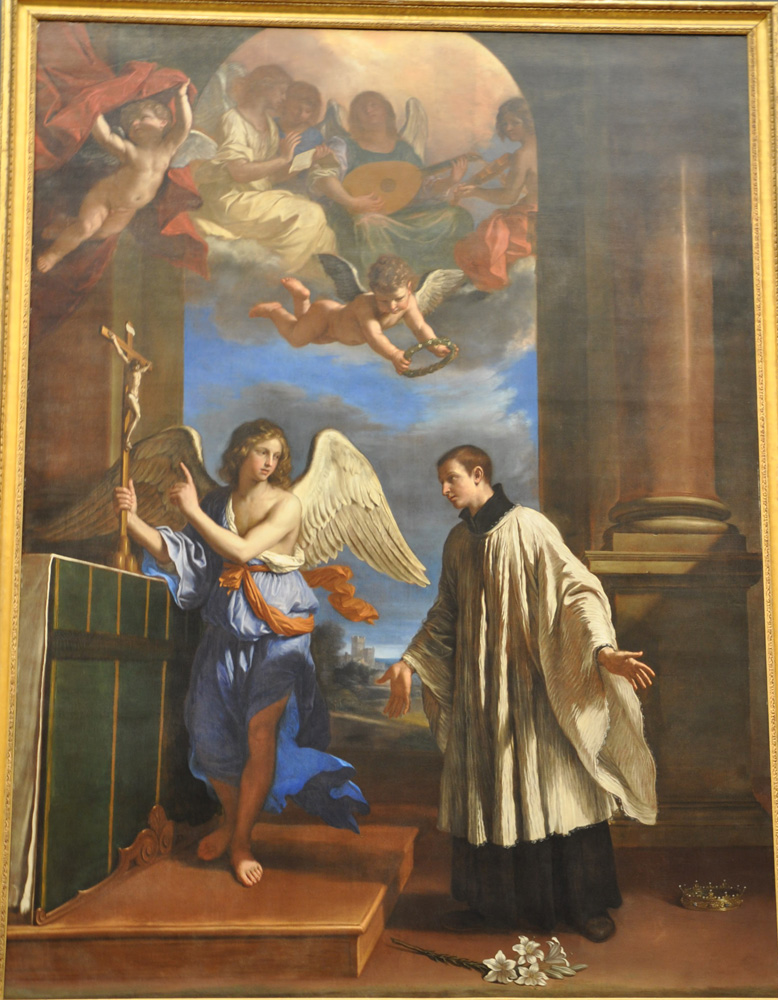
Guercino
The Vocation of St. Aloysius Gonzaga
Circa 1650
Oil on canvas
Metropolitan Museum of Art, gift of Mr&Mrs Charles Wrightsman, 1973.311.3
The black cassock and white surplice are customary in images of Aloysius Gonzaga, as are the crucifix and the lilies. The crown on the floor refers to the marquisate of Gonzaga, which Aloysius renounced in order to enter the clergy. The crown in the hands of the angel is most likely a symbol of martyrdom, referring to the saint's death during the plague of 1591 in Rome. He had volunteered to serve in the hospital that the Jesuits had set up for plague victims, and he contracted the disease during that service (Butler, III, 605). His death had been foretold to him in an "interior illumination" in 1590:
One morning during his prayer when rapt in contemplation, he received an interior illumination by which he understood that his time on earth was to be very short. It was further intimated to him that he was to strive for greater perfection in the service of God, and, for complete detachment, more earnestly than ever. He seemed also to himself to experience an interior change which his affections were strangely withdrawn from things of this world.
– Cepari, 210
It is likely that this "illumination" is the painting's subject rather than any earlier vision involving a vocation to the clergy. No such vision is mentioned in Cepari, the chief contemporary source for Gonzaga's life, nor in the Acta Sanctorum (June vol. 3, 847-1169) or Butler (603-606).
Angels singing in Heaven from a shared songbook were a common device in the previous century. See this page for more examples.
View this image in full resolution,
Read more about images of St. Aloysius Gonzaga
Photographed at the museum by Richard Stracke, shared under Attribution-NonCommercial-ShareAlike license.